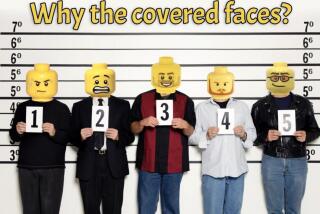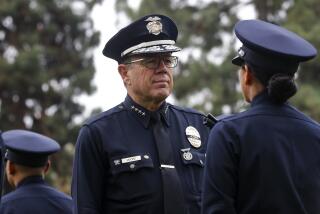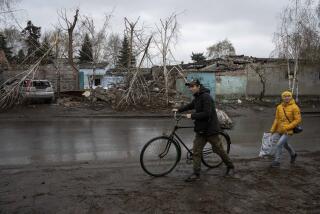Photos of War Dead Released by Pentagon
WASHINGTON — Reversing a policy under fire, the Pentagon released photographs Thursday of flag-draped caskets bearing American soldiers killed in combat.
The pictures, taken by military photographers, were released in response to a Freedom of Information Act request by Ralph J. Begleiter, a University of Delaware professor and former CNN correspondent, who sought all photos of the caskets of soldiers who died in the wars in Iraq and Afghanistan since October 2001.
The release reversed a policy that critics said had allowed Pentagon managers to conceal the reality of hundreds of coffins arriving home in U.S. military cargo planes.
The Defense Department made the photos public with few dates or locations and little context, making it unclear whether the individuals in any of the hundreds of pictures died in Iraq, Afghanistan or elsewhere. The faces of soldiers accompanying the coffins were blacked out.
“Each individual picture is looked at for Privacy Act and security reasons,” said Navy Lt. Cmdr. Gregory Hicks , a Pentagon spokesman. “Individual judgments were made to black out some faces and identifiable information to protect privacy.”
Plaintiffs in the case said there was no reason for the Pentagon to black out the faces, other than to make the images unusable. The Pentagon, they pointed out, routinely posts pictures -- including identifiable shots of individual soldiers -- on its Web page. The Pentagon said soldiers in those pictures had given permission for their images to be used, but those in the coffin photos were under the impression that they would not be publicly released.
It was the second release of vivid shots of camouflage-clad soldiers bearing the coffins of slain troops. The Air Force, responding to another FOIA request, released 361 photos in April from Dover Air Force Base in Delaware. The Pentagon continues to refuse to allow journalists to photograph the arriving coffins independently.
The ban on such photos was imposed before the 1991 Persian Gulf War by Defense Secretary Dick Cheney. Analysts said it was prompted by embarrassment after President George H.W. Bush was shown by three television networks in split-screen images. In one box, the president chatted breezily with White House reporters, sometimes joking. In the second frame were somber images of returning caskets from the U.S. assault on Panama.
Begleiter filed the FOIA request a year ago and then filed a lawsuit in October, seeking to force the release of the pictures. By releasing the pictures, the Pentagon preempted a ruling by U.S. District Judge Emmet G. Sullivan.
“This is an important victory for the American people, for the families of troops killed in the line of duty during wartime, and for the honor of those who have made the ultimate sacrifice for their country,” Begleiter said in a statement.
“This significant decision by the Pentagon should make it difficult, if not impossible, for any U.S. government in the future to hide the human cost of war from the American people.”
More to Read
Sign up for Essential California
The most important California stories and recommendations in your inbox every morning.
You may occasionally receive promotional content from the Los Angeles Times.










